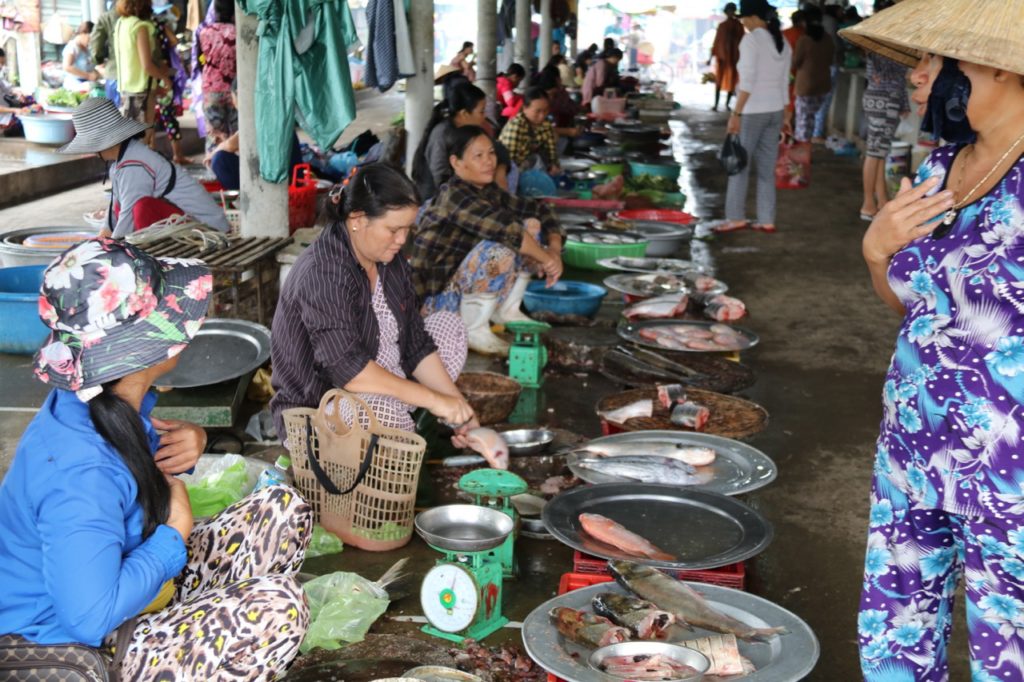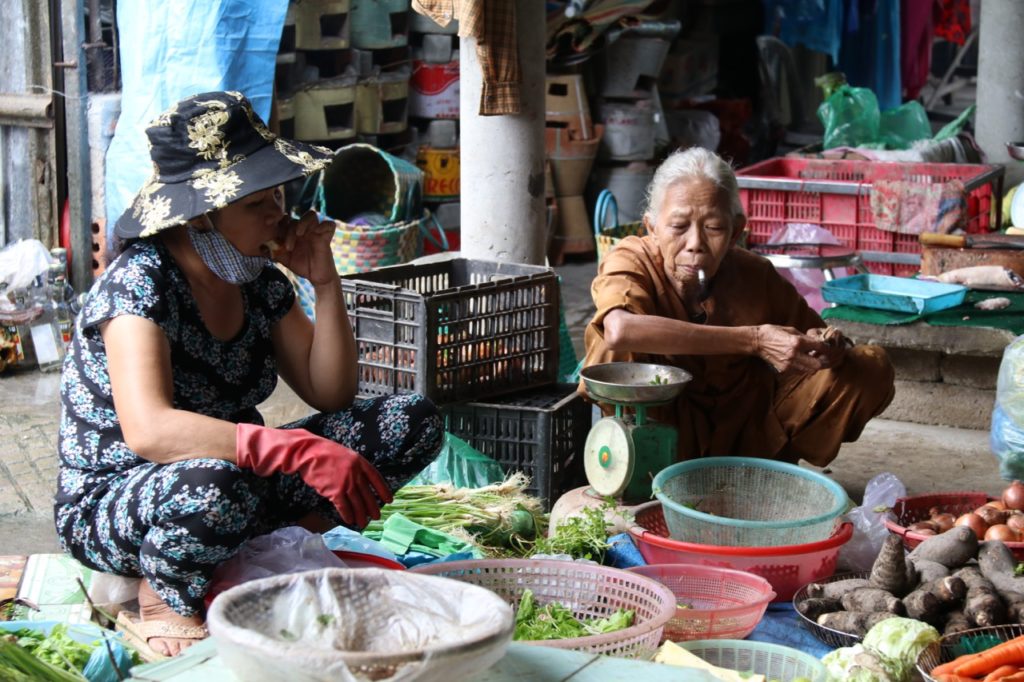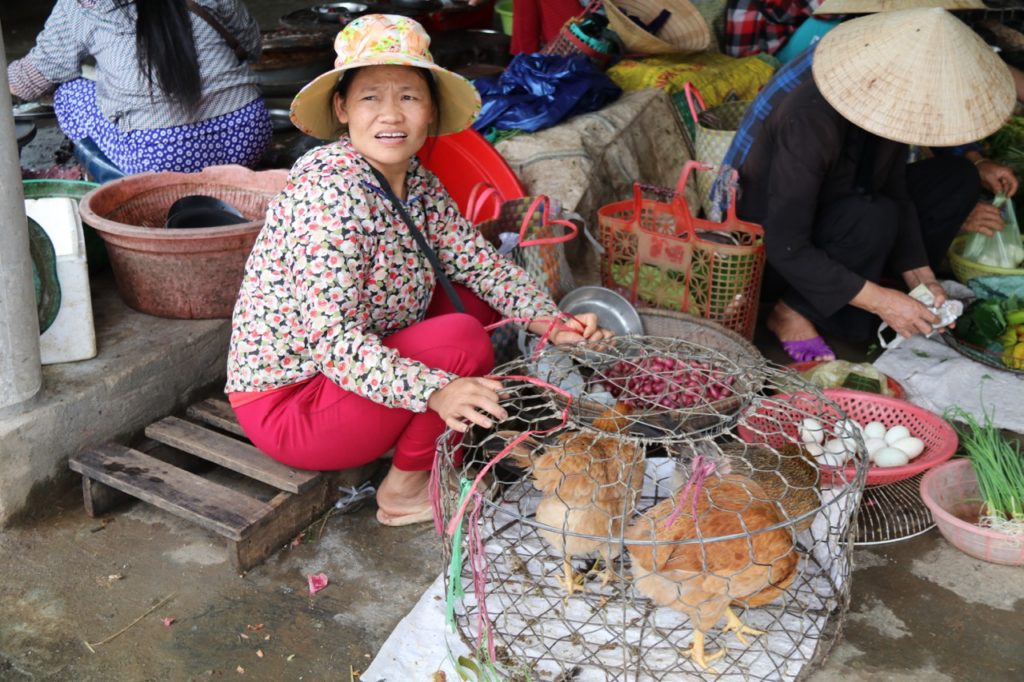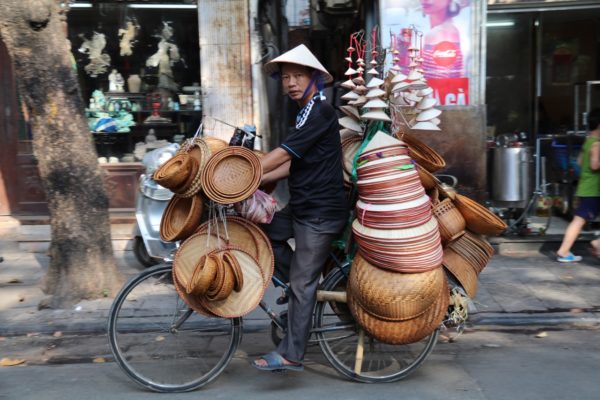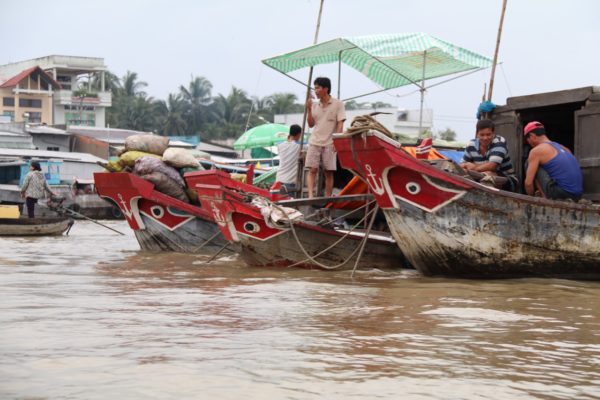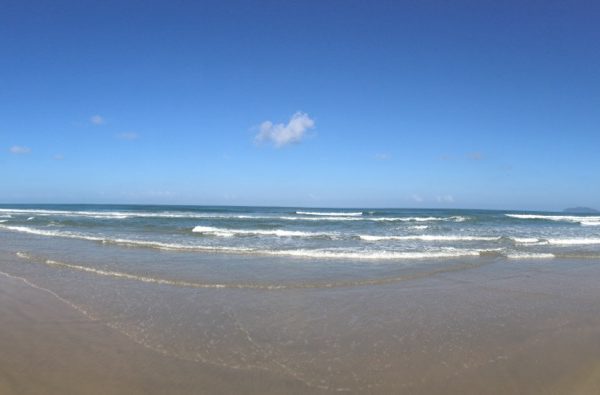The Royal City of Hue, located in central Vietnam, was home to the Nguyen dynasty and the capital of Vietnam until 1945. The Imperial City, a UNESCO World Heritage Site, and the tombs of the Nguyen emperors are the main attractions. Hue is also the start point for tours into the DMZ (De-Militarised Zone) which offer a fascinating insight into the Vietnam War.
See our separate post on Touring the DMZ with a War Veteren
THE ROYAL TOMBS
The Royal Tombs of the rulers of the Nguyen Dynasty (1802-1945) are extravagant mausoleums constructed along the banks of the Perfume River. They are located between seven and sixteen kilometres south of Hue. All the tombs consist of three elements – a temple dedicated to the worship of the Emperor and his Queen, a large stone stele which recorded details of his life and reign, and the Royal Tomb which is located at the highest point in the complex.
First stop on our city tour was the mausoleum to Emperor Tu Doc (1848-1883) which was designed by the King himself. It is beautifully set in pine forests and partly surrounded with lotus filled lakes. The mausoleum was built during Tu Doc’s lifetime and he spent many years there with his wives and concubines. He had 104 wives and many concubines! Everyone involved in his burial were subsequently executed in order to keep his final resting place secret to avoid desecration and robbery. The mausoleum is not where he is actually buried – this remains a mystery.
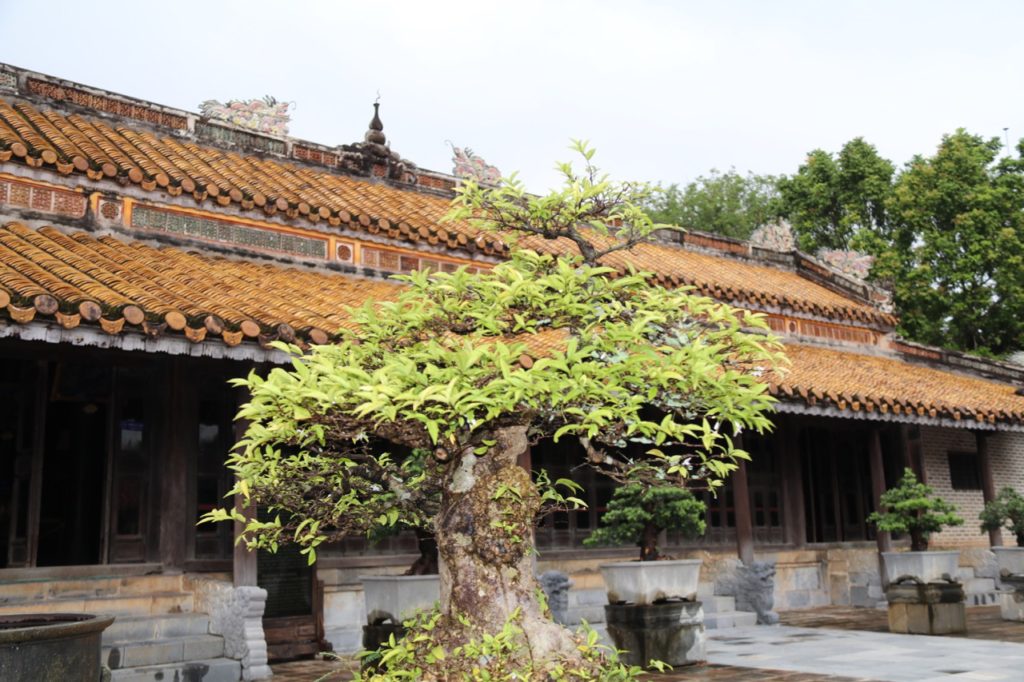
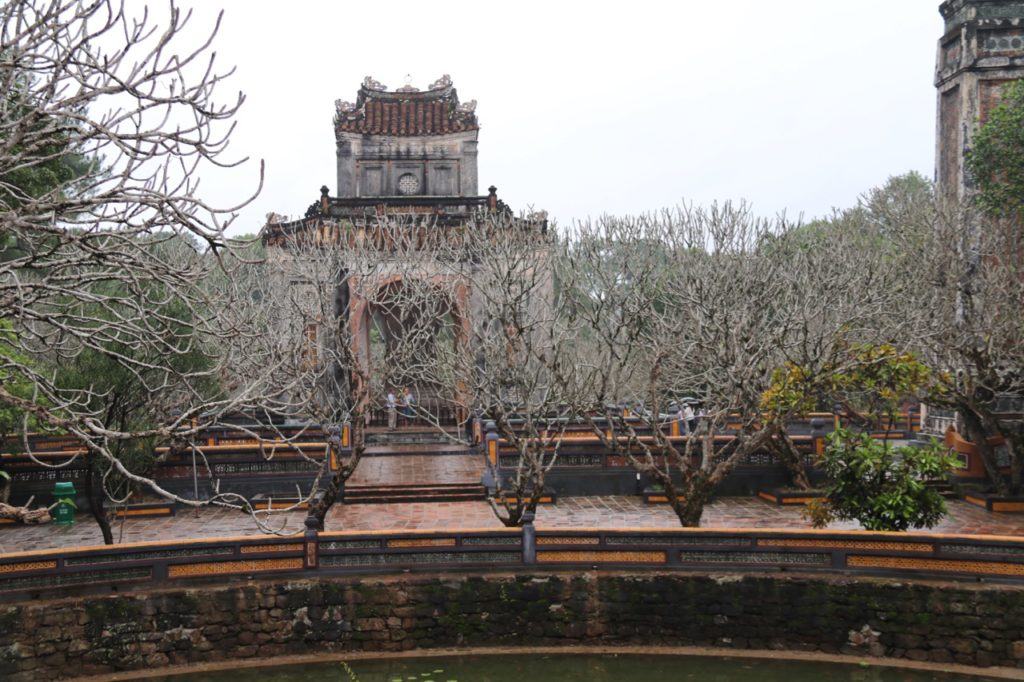
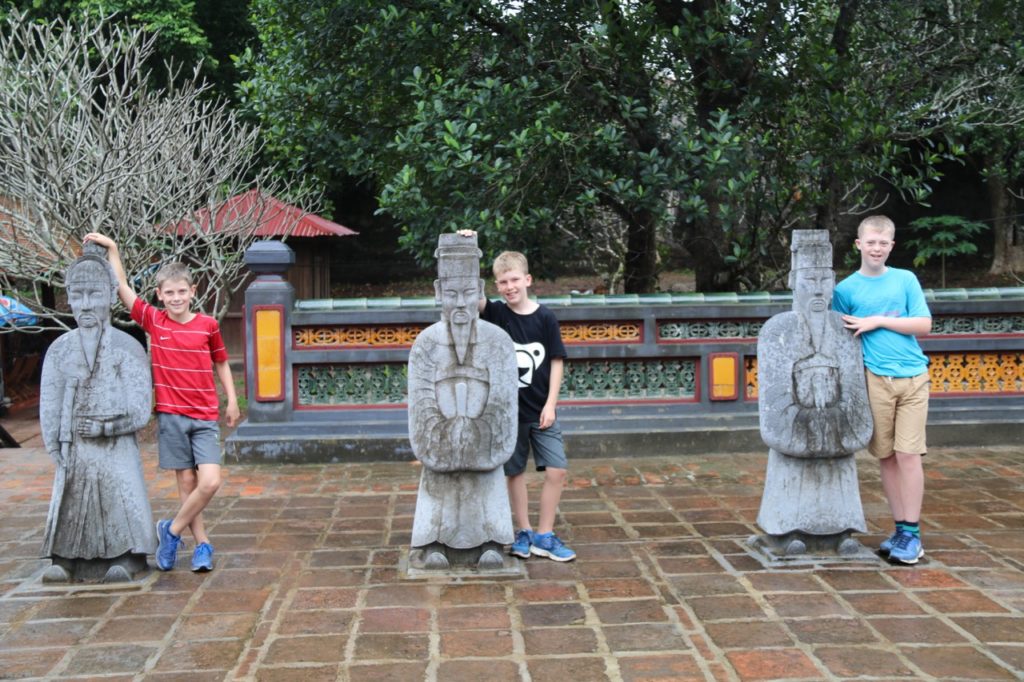
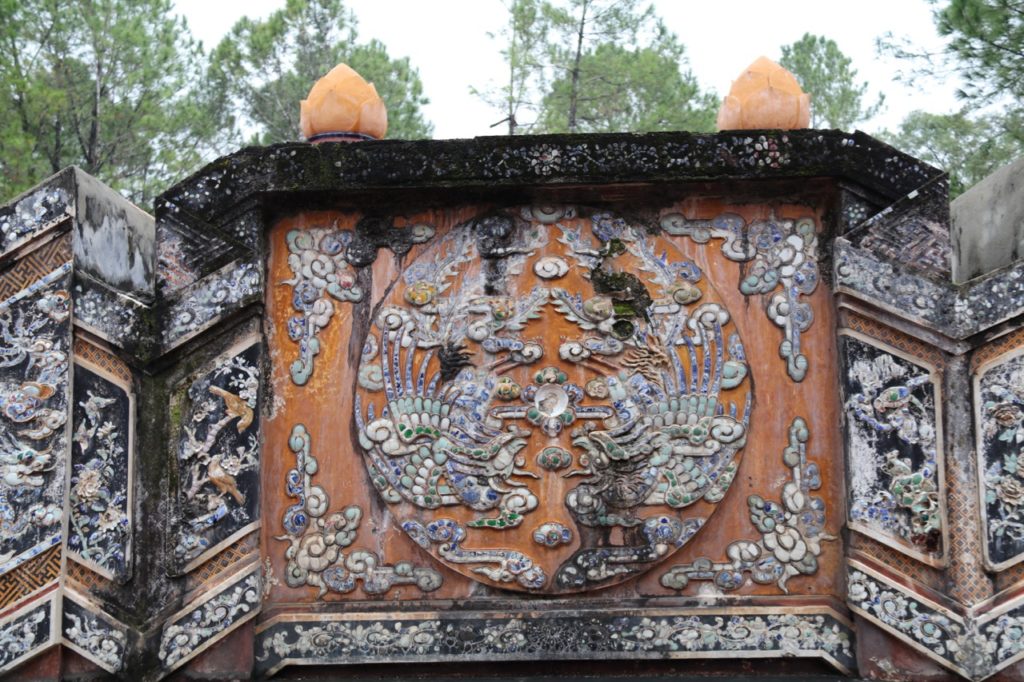
THIEN MU PAGODA
The Thien Mu Pagoda was the next stop on our tour of Hue City. Built on a hillock overlooking the Perfume River. The octagonal tower, at 21 metres high, was constructed in 1844. It is also known as the ‘Pagoda of the Heavenly Lady’.
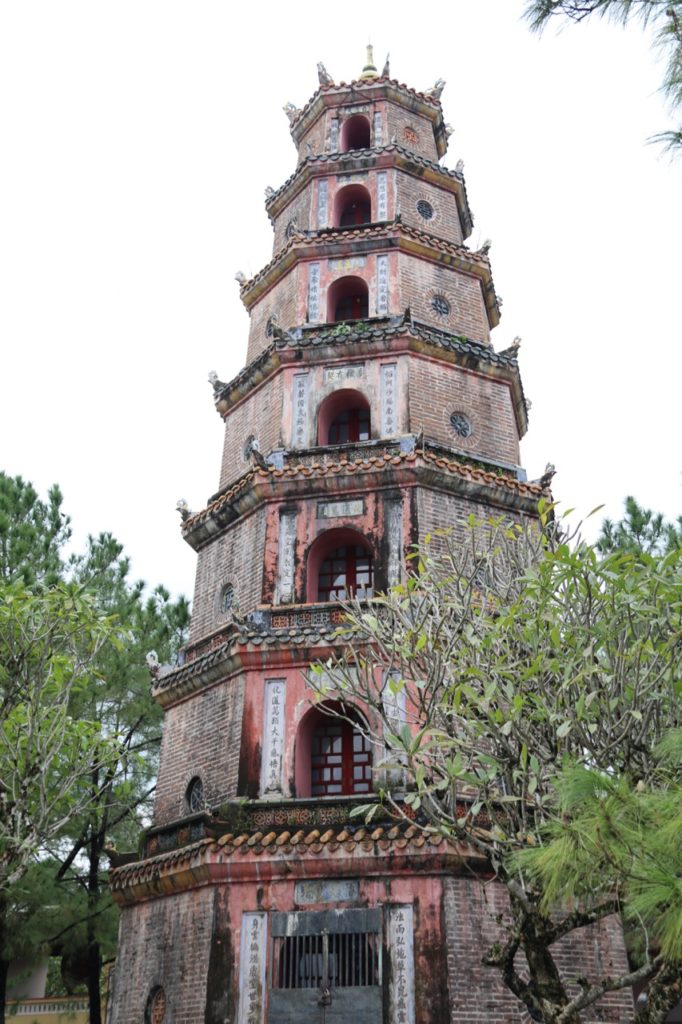
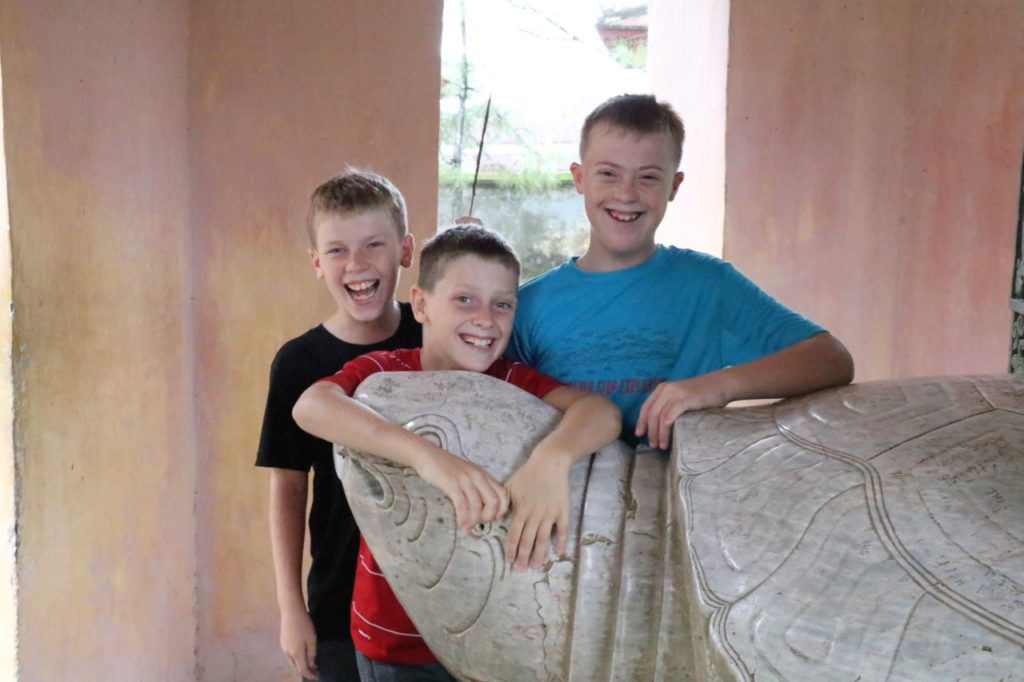
THE IMPERIAL CITY
Our last stop of the day was at the Imperial City. The emperor’s official functions were carried out in the Imperial Enclosure, a citadel within a citadel, with 6 metre high walls, 2.5 kilometres in length. Within the Imperial Enclosure is the Forbidden Purple City, which was reserved for the private life of the emperor. The citadel was catastrophically bombed during the Vietnam War and consequently most of what you see has been rebuilt. We were disappointed by the Imperial City as it felt too new and polished.
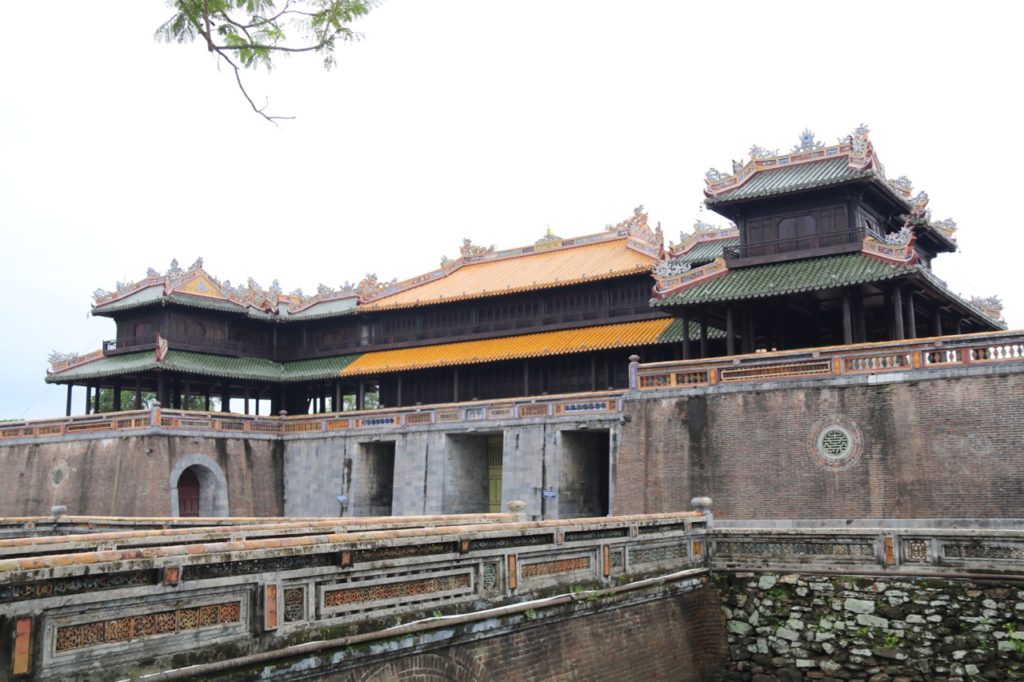
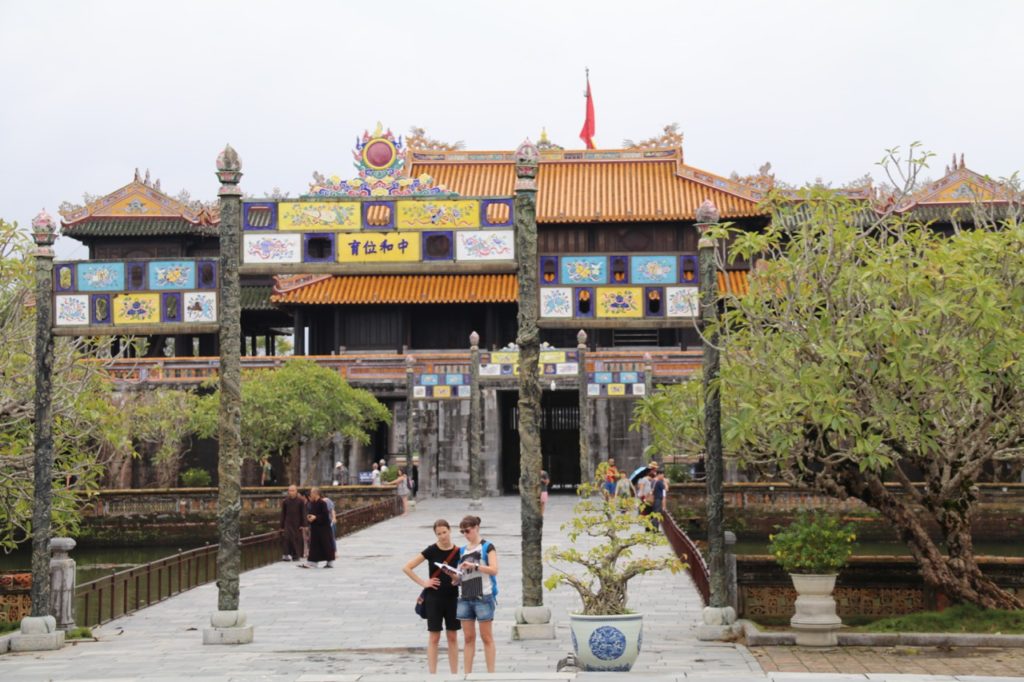
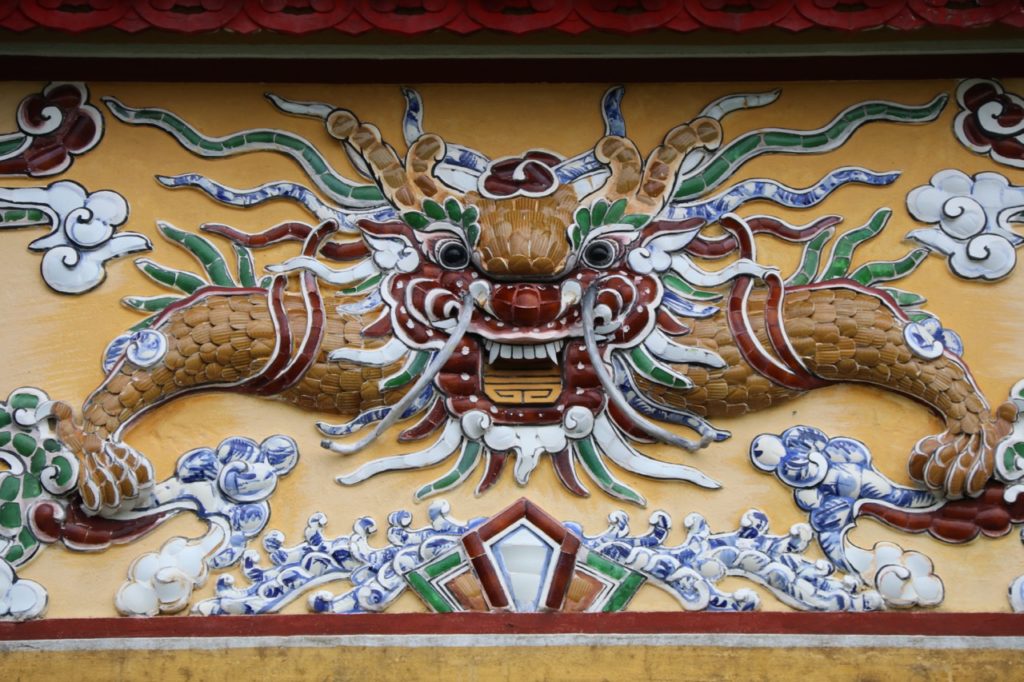
Whilst in Hue we also visited a local market, a must for us in any town. Always colourful and entertaining.
TOURS
We organised a driver for our city tour of Hue through our hotel. We paid 35US$ and it took about six hours in total. There is no need for a guide as long as you have a decent guidebook.
Our tour of the DMZ was led by Mr Trung, a war veteran who fought with the South Vietnamese Army during the Vietnam War. We would highly recommend using Mr Trung for any tour of the DMZ. The full day tour takes ten hours but includes the two areas of the DMZ, along Highway 1 and Highway 9.
WHERE WE STAYED
We spent three nights at the Holiday Diamond Hotel. This was a clean, quiet, simple hotel, right in the centre of Hue.


